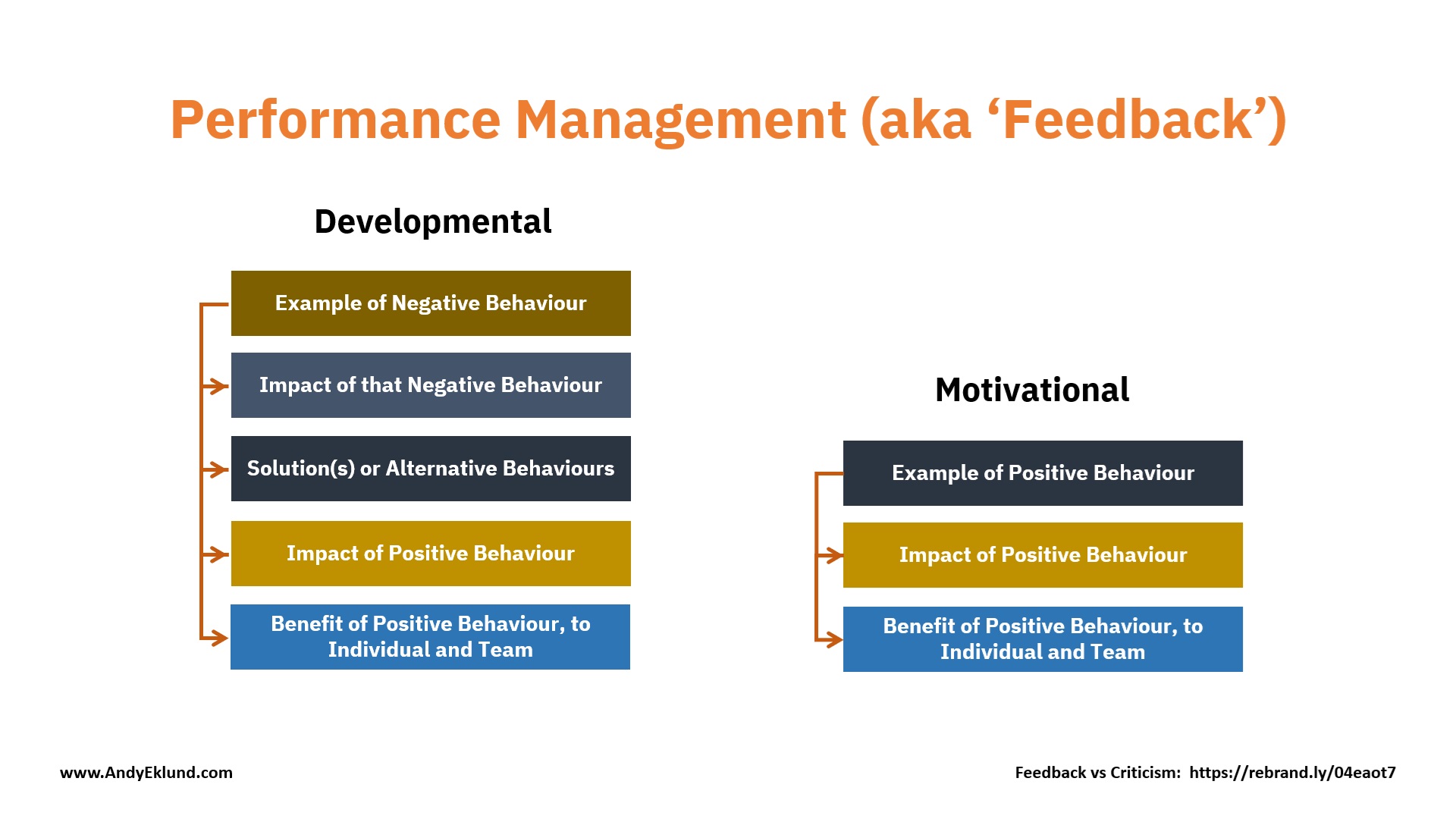I’m sure you’ve given or received feedback at some point in your career. But, do you know the two different methods to give feedback?
For many people, receiving feedback automatically comes with a sense of dread. I can’t speak for you, but in the past, my managers have been …
- Unprepared
- Political
- Distracted
- Scared
- Disinterested
- Vague
- Perhaps worst of all, couldn’t look me in the eye
Let’s be honest. Is it any easier giving feedback? I’m not sure. The phrase that always popped up in my mind while preparing for an evaluation was: “Am I over-thinking this?”
Later on, I learnt the reason I was over-thinking was because I didn’t realise there are two basic ways to give feedback, depending upon what type of feedback you’re trying to give.
- Are you trying to inspire by building their confidence and reinforcing positive behavious and attitudes? That’s Motivational Feedback
- Are you encouraging change and improvement by outline what the person is not yet doing well? That’s Developmental Feedback
As the chart below shows, these two methods of giving feedback are similar.
Two Methods to Give Feedback
Development Feedback
Development feedback (to adjust and improve a person’s performance) has five sections. (See below left.)
1. Offer a specific example of negative behaviour
This might be something that was said or done that you perceive as negative, such as a waste of resources, emotions, etc.
2. Give an example the negative impact this has had on others
The effect may be on an individual, the team, a project, etc. This should include the negative affect this has had on the person’s reputation.
3. Offer suggestions of alternative solutions or behaviours
Do not phrase these options as ways they must behave in the future. You’re only providing advice for them to consider. However, speak of cause and effect. You do this, that will hapen. The action is their choice.
Offer to brainstorm with them ways to apply your suggestions by adapting it to the person’s skills, situation or personality. You must engage them if you want change. Ask why they did something in particular way. Perhaps you may find they had the best intentions but poor execution
4. Talk about how these different positive behaviours could impact the situation or the people involved.
5. Speak to the benefit that this positive behaviour or action had overall or will continue to have in future situations.
Motivational Feedback
Motivational feedback (to reinforce and support positive performance) had three sections. (See above right.)
1. Offer a specific example of positive behaviour
It might be something that was said or done that you perceive as positive, effective, efficient, innovative, etc.
2. Give an example of the impact this positive example
How or why it’s important, either to the individual themselves, to the team, a client, a project, the business, etc.
3. Speak to the benefit that this positive behaviour or action
This might be something simple or something overall, with the added benefit of improving future situations.
A side note that I hope is obvious: don’t wait to praise someone.
Click on the artwork above to save the JPG, or click here for a PPT slide.
Please feel free to add your thoughts to giving feedback, either done well or poorly.
Click any button to jump to related posts on Feedback.



No comment yet, add your voice below!